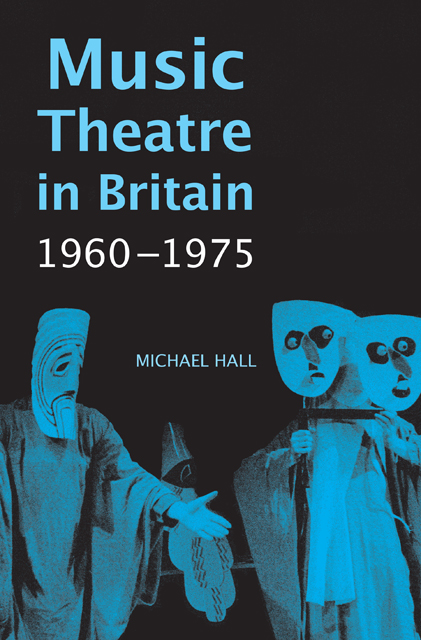Foreword by Alexander Goehr
Published online by Cambridge University Press: 23 February 2023
Summary
Music Theatre, as so known, was and is the descendant of operetta and flourished on Broadway in the earliest part of the twentieth century. Its influence spread throughout the world. But this is not how the nomenclature is understood in the late Michael Hall’s book. ‘Our’ much more modest Music Theatre has in common with the senior American version only a general belief that opera/Music Theatre must relate in some way to the preoccupations, scope and style of contemporary spoken theatre. ‘Opera’ as practised in the opera houses reflects its eighteenth-and nineteenth-century origins and repertoire and its excursions into new forms have only rarely succeeded.
Britten himself, the most successful twentieth-century composer for the opera house, was, at best, ambivalent about it and much of his best work moves away into what were, in his time, new forms of presentation, reduction of scale and scope, and, most radically, the building of his own theatre replacing the churches and church halls where much of his work was first shown.
When, in the early 1970s, John Cox and I were given the opportunity by the impresario Ian Hunter to come up with new forms of presenting new music, we devised a new version of the music-theatre concept. The scale was to be significantly reduced, approximating to the size of the Royal Court Theatre. We might perform in theatres, but also, following Britten’s example, in any available space (acoustics permitting). Gone would be the large orchestras; singers chosen for their carrying voices were less in demand than singers who could speak, act and even mime. Our long-term ambition, following the work of Kagel and Ligeti (Sur scène and Aventures) was to replace the idea of sung play with instrumental accompaniment, with a form where vocal performance, instrumental expression and circus-derived virtuosity for its own sake existed in contrapuntal balance. In my time this ideal was rarely, if at all, achieved.
I believed that new forms of Music Theatre, created by ourselves and like-minded friends, would only succeed if I could find a pedigree of existing related repertoire to perform along with new pieces. The already mentioned Kagel and Ligeti pieces existed, and chronologically previous to them were the Stravinsky pieces (Renard, The Soldier’s Tale), the Hindemith and Brecht–Weill collaborations at the Baden-Baden Festivals of the late 1920s, the play with music by Satie, or Milhaud’s miniature operas.
- Type
- Chapter
- Information
- Music Theatre in Britain, 1960–1975 , pp. x - xiPublisher: Boydell & BrewerPrint publication year: 2015



